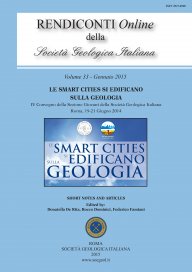
The smart use of the Valle Murcia geology in the construction of Circus Maximus
Elena Carpentieri (*), Donatella De Rita (*), Giuseppe Della Monica (*), Marina Fabbri (**), Giorgia Carlucci (*), Giorgia Galli (*), Marialetizia Buonfiglio (***) & Gianluca Zanzi (***)
(*) Dipartimento di Scienze, Università di Roma Tre, Largo San Leonardo Murialdo 1, 00146 Rome, Italy. E-mail: elenacarpentieri79@gmail.com
(**) Freelancer, Via Romolo Gigliozzi 136, 00128 Rome, Italy.
(***) Sovrintendenza Capitolina, U.O. Monumenti di Roma: scavi, restauri e valorizzazione - Servizio Monumenti Archeologici Medievali e Moderni, Roma Capitale, Rome, Italy.
Volume: 33/2015
Pages: 16-19
Abstract
The Murcia Valley is one of the largest tributaries to the Tiber river; south-east the Tiber Island. The valley, between the Palatine and Aventine hills, was a wide waterlogged area. Despite attempts to land reclamation started as early as the 7th century BC under Lucius Tarquinius Priscus, the swampy nature and difficult management, suggested to the romans to destine the area, for its proximity to the Foro Boario, to ritual activities and socialization, such as games and competitions in the largest building for the show of all time that is the Circus Maximus. Through surveys ERT (Electrical Resistivity Tomography) we investigated the geometry of the original valley to understand how the romans had operated to drain the valley. Results suggest that the Murcia Valley, where the Circus Maximus is, probably was a anastomosed flood plain.
The romans forced the waters in two side channels at an embankment realized through the union of sandy-clayey bars. This latter over time was monumentalised with the Spina around which ran the quadrigas. This interpretation well agreement with respect for nature that Romans observed. Furthermore, we recognize an original oblique NW-SE trend of the Spina, according to the orientation of the Imperial palaces on the Palatin hill.
Keywords
Get Full Text